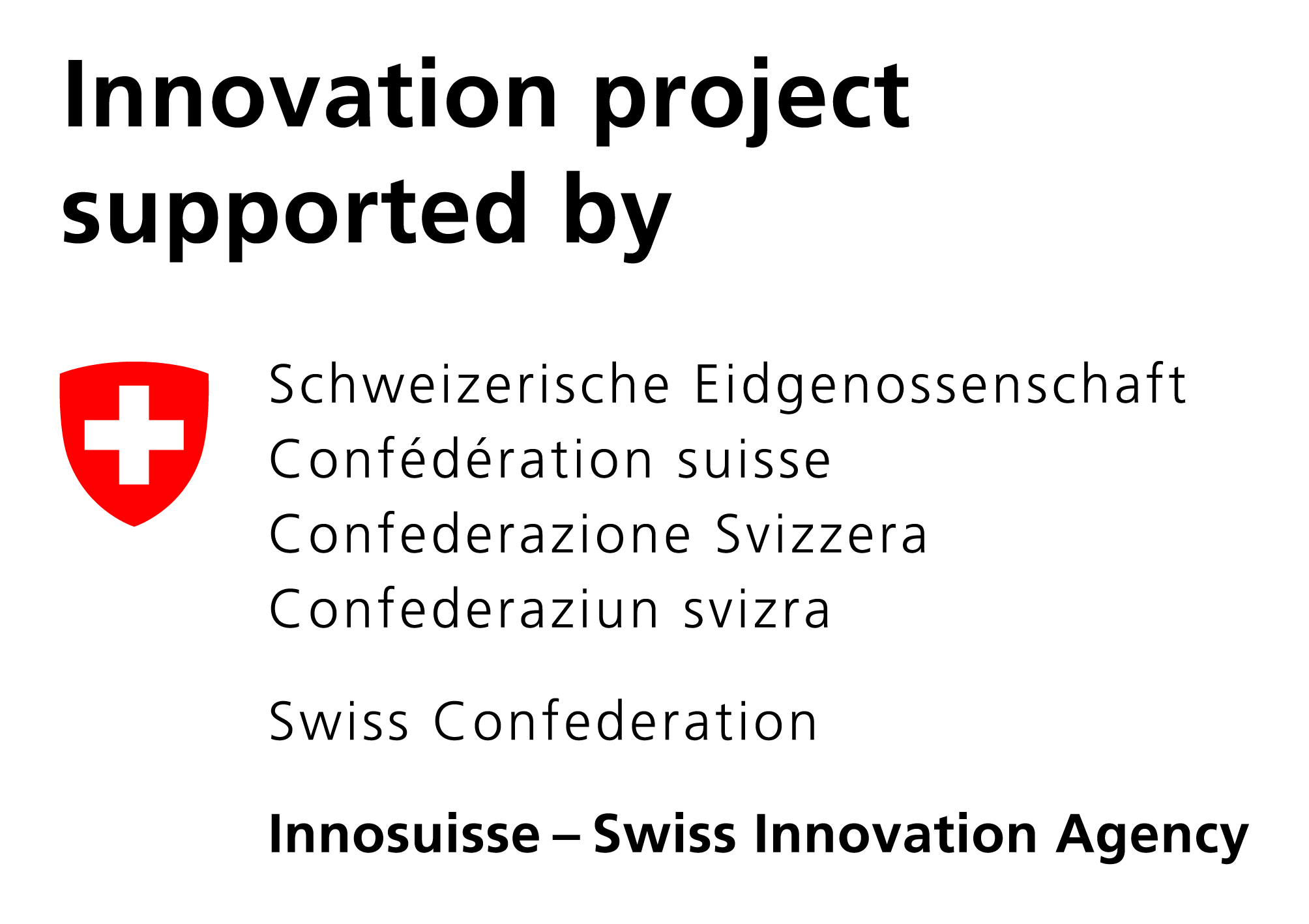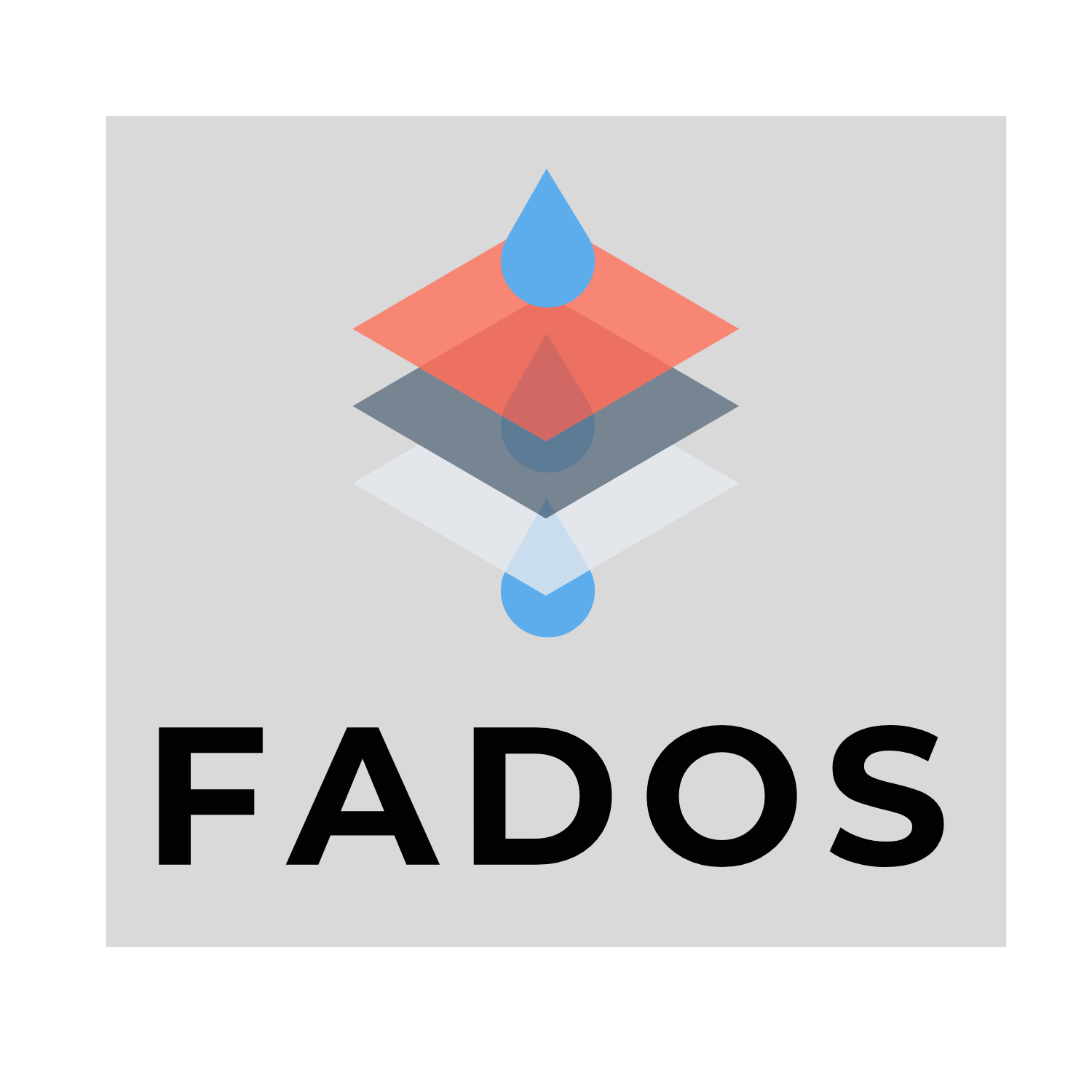
R&D Projects
Novel metrology equipment & protocols for perovskite-based photovoltaics reliability enhancement “MetroPero”
Project Partners: Fluxim AG, CSEM – Centre Suisse d’Électronique et de Microtechnique (Switzerland), Korea Institute of Energy Research – KIER (South Korea), TNE TECH Co., Ltd. (South Korea)
Duration: November 2025 to October 2028 (36 months)
Funding: Joint R&D project funded by Innosuisse (Swiss Innovation Agency) and KIAT (Korea Institute for Advancement of Technology).
About MetroPero
MetroPero develops new stress-testing equipment and protocols to accelerate reliability assessment for perovskite-based photovoltaics (PV), with a special focus on perovskite/Si tandem solar cells. The project addresses the central question limiting commercial deployment of perovskite PV:
Can these devices achieve a service lifetime of more than 20 years?
To answer this, MetroPero combines expertise from Switzerland and South Korea across device fabrication, module integration, metrology and stress-testing:
Project objectives
Develop a next-generation stress-testing system featuring in situ multi-modal metrology, including electrical measurements, optical imaging, photoluminescence (PL), and electroluminescence (EL).
Track degradation spatially and in real time under field-relevant stressors (illumination, high temperature, electrical bias).
Identify dominant failure modes in perovskite/Si tandem solar cells and modules.
Develop new accelerated aging protocols that can serve as the foundation for future industry standards.
Establish stress-testing methodologies and metrology workflows enabling robust and reproducible assessment of device stability.
Fundamentals and Applications of Doped Organic Semiconductors“FADOS”
Beneficiaries: Heidelberg University (UHEI), Chalmers Tekniska Hogskola (CTH), Agencia Estatal Consejo Superior de Investigaciones Cientificas (ICMAB-CSIC), Fondazione Istituto Italiano di Tecnologia (IIT), Linkopings Universitet (LIU), University of Liverpool (ULiv), Centre National de La Recherche Scientifique (CNRS), Stuttgart University (USTUTT), Imperial College of Science Technology and Medicine (ICL), Universidade da Coruña (UDC), FlexEnable (FE), Epishine (EPISHINE), LunaLEC (LunaLEC), Forschungszentrum Jülich (FZJ)
Associated Project Partners: Bern University (UBERN), Fluxim (FLUXIM AG), Georgia Institute of Technology (GT), KAUST, University of Colorado (UCOL), Molecular Gate (MG), AutoSyn (AUTOSYN), Universitat Autònoma de Barcelona (UAB), Politecnico di Milano (POLIMI), The Chancellor, Masters, and Scholars of the University of Cambridge (UCAM), University of Strasbourg (UNISTRA), RWTH Aachen University (RWTH), Umea University (UMU)
Duration: 48 Month Starting 1st September 2025.
Funding: European Union under the Marie Skłodowska-Curie Actions (MSCA) Doctoral Networks 2024. funding for two additional Doctoral Candidates (DCs) within the project will be provided by the Swiss State Secretariat for Education, Research and Innovation (SERI). These two DCs will be associated with Bern University (UBERN) and Fluxim (FLUXIM AG).
About FADOS
FADOS explores spatio-temporal control of doping in organic semiconductors and links doping to a full set of material properties—not just steady-state electronic behavior—covering thermal, mechanical, and biological aspects. This approach addresses practical issues such as contact resistance and enables switchable, reconfigurable devices. The consortium (8 universities, 4 research institutes, 4 companies) spans major application areas: light emission, photovoltaics, logic, and instrumentation/modeling. Doctoral candidates follow a balanced training program with academic–industrial secondments and skills in open science, IP, entrepreneurship, and communication. Near term, FADOS strengthens European competitiveness; longer term, it enables new, sustainable functions via local, dynamic tuning of soft semiconductors.
Design and Development of Industry Compatible Characterisation Equipment for Emerging Perovskite and Perovskite/Silicon Tandem Solar Cells (DICE)
Project Partners: Fluxim AG, Endeas Oy, Åbo Akademi University, Tampere University, EPFL, ZHAW
Duration: November 2024 to April 2027 (30 months)
Funding: Eurostars is part of the European Partnership on Innovative SMEs. The partnership is co-funded by the European Union through Horizon Europe.
About DICE
The DICE project aims to develop industry-compatible characterization equipment for emerging perovskite solar cell (PSC) and perovskite/silicon tandem solar cell (PST) technologies to overcome the limitations of silicon photovoltaics. The project focuses on:
● Developing a fast industrial flash solar simulator with an advanced characterization protocol for PSCs and PSTs.
● Creating a multispectral imaging setup for upscaled PSCs and PSTs to support quality control during manufacturing.
● Modeling the impact of mobile ions on PSC and PST performance.
The project aims to strengthen the EU’s position in the PV market.
MSCA Doctoral Network MENTOR Indoor photovoltaics: towards an energy and climate-neutral world
Project Partners: Fluxim AG, Tampere University, Tor Vergata, Epishine, CEA, ICN2, University of Gronigen, University of Siena, TUM, CNRS, UPC, ECO Recycling, World Sensing, centi, National Physical Labratory
Project Website: MSCA-DN MENTOR | Indoor photovoltaics: towards an energy and climate-neutral world | Tampere Universities (tuni.fi)
Duration: 1 October 2024 to 30 September 2028
Funding: European Union’s Horizon Europe (HORIZON), Marie Skłodowska-Curie Actions Doctoral Networks (MSCA-DN)
About MENTOR
The MENTOR research initiative is dedicated to advancing next-generation indoor photovoltaics (IPVs) with the goal of efficiently harvesting energy from artificial light sources to power electronic devices, ultimately contributing to a sustainable and climate-neutral future. Recognizing the growing importance of energy reuse and sustainability, MENTOR will build the first international network of 8 universities, 7 industrial partners, and 5 research centers, creating a diverse and comprehensive platform for IPV research and development.
The project covers a wide array of crucial technologies, including the synthesis of organic and inorganic materials, IPV device physics and modeling, sustainable design, advanced manufacturing, and cutting-edge characterization methods. The initiative will also explore recycling methods and industrial processing of IPVs, promoting the circular economy in renewable energy technologies.
MENTOR’s interdisciplinary and intersectoral approach will provide robust training and research opportunities, particularly through its doctoral program. With 16 individual doctoral candidate projects, the initiative will develop a new generation of researchers and leaders capable of steering future academic and industrial R&D in renewable energy, electronics, and sustainable innovation.
Rationally Designed Thin Contact Layers enabling Large-Scale Perovskite-on-Silicon Tandem Photovoltaics (RADICALS)
Project Partners in Switzerland: EPFL, CSEM, ZHAW, KTU, Fluxim
Duration: 48 months
Funding: Swiss National Science Foundation
About RADICALS
The RADICALS project seeks to enhance photovoltaic efficiency by developing metal halide perovskite (Pk)/silicon (Si) tandem solar cells, aiming for over 30% efficiency on areas larger than 100 cm² and extending operational lifetimes to rival those of Si photovoltaics. Perovskites offer low-temperature processing, abundant materials, and high lab efficiencies, but scaling up and durability are challenges.
The project will delve into the growth principles of Pk and contact materials, particularly focusing on self-assembled monolayers (SAMs) for their superior lab-scale performance. Through novel SAMs, the project aims to address the performance and stability of Pk/Si tandems, improving deposition methods for scalability and robustness. Collaborating across several institutions, RADICALS combines expertise in device integration, material development, and advanced characterization to overcome the current limitations of tandem solar cells, aiming for high-efficiency, stable, and scalable solutions for the photovoltaic industry.
Packaging technology, stability evaluation, and non-destructive testing for commercialization of perovskite solar modules (PACSTATE)
Project Partners in Switzerland: Zurich University of Applied Sciences (ZHAW), Solaronix SA, Fluxim AG
International Cooperation: Pusan National University (Korea), UNIS (Korea), Ajou University (Korea)
Duration: 36 months
Funding: Innosuisse
About PACSTATE
The PACSTATE project aims to advance the commercialization of perovskite solar modules through innovative packaging technology, stability evaluation, and non-destructive testing.
The core objectives include the development of new encapsulation and anti-degradation materials, alongside a commercial system for accelerated stability evaluation of these modules.
A significant focus is also on advanced non-destructive testing and modeling methods to optimize the solar module comprehensively. The project's innovative content spans creating Anti-Degradation Blocking Layers to prevent perovskite degradation, developing high-quality Crosslinking-based Encapsulation Materials to inhibit deacetylation, and employing optimized methods for lifetime testing and degradation mechanisms identification. Furthermore, non-contact wideband terahertz imaging methods and multiphysics modeling are part of the R&D, aimed at optimizing the multilayer structure of the packaged modules. The ultimate goal is to upscale commercial perovskite PV modules with the new packaging processes.
The market potential is high, with the new encapsulation materials envisioned as replacements for current films, and the enhanced lifetime testing systems accelerating the development and commercialization of emerging PV technologies, significantly benefiting academia and industry. The project partners aim to introduce their new products to the market within a year post-project completion, indicating a rapid transition from research to market implementation.
Display Innovation, Simulation, Creation and Optimization (DISCO)
Project Partners: Excyton Ltd (UK), University of Durham (UK), Fluxim AG (CH)
Duration: 18 months
Funding: Innosuisse
About DISCO
Together with our colleagues at Excyton and Durham University, Fluxim will produce a Prototype TurboLED Display and a Display Calculation Tool. The prototype, aimed at laptops and built in collaboration with well-known display manufacturers, will target power savings of over 40% against standard RGB OLED displays through innovative design using light and saturated OLED pixels. This project aims to capitalize on the expanding global OLED market, projected to surpass $60 billion by 2026. Alongside, Fluxim is developing a versatile Display Calculation Tool to compute power consumption in RGB arrays, not just for TurboLED but also for forthcoming display panel approaches.
This tool, integrating with Fluxim’s Setfos software, will enable the optimization of RGB structures for specific display concepts, thereby identifying power-efficient sub-pixel intensity combinations. With no current market tool offering such optimization, this innovation holds promise for a wide spectrum of clientele including tech giants like Apple, Samsung, and academic entities.
About SuPerTandem
SuPerTandem will accelerate the European transition to clean energy by developing a scalable, low CO2 footprint photovoltaic technology for highly-efficient (>30%) two-terminal tandem cells and modules based on complementary metal-halide perovskite absorbers. SuPerTandem uses and develops sustainable and earth-abundant perovskite absorber materials, ancillary materials, and scalable large-area manufacturing processes to create a novel low-cost environmental-friendly photovoltaic (PV) technology.
TADFsolutions - addressing the challenges of high-performance solution-processed OLEDs using sustainable materials
Project website: TADFsolutions (uni-bayreuth.de)
Duration: 3 Years
Funding: Horizon Europe
Contributors: Fluxim AG, University of Bayreuth, Simbeyond B.V., CNRS, Institut des Sciences Chimiques de Rennes, Technical University Eindhoven, University of Cologne, Universidad de Valencia, University of Bordeaux, University of St Andrews, Durham University
About TADFSolutions
TADFsolutions will train a cohort of dynamic researchers to devise, develop and implement sustainable solutions for improving the device performance of solution-processed OLEDs for display applications. In the 21st century, displays play a central role. They are embedded in almost every type of electronic device and it is difficult to imagine a world without mobile phones, monitors, and televisions. The pervasiveness of displays is driven by the disruptive organic light-emitting diode (OLED) technology. There are, however, some structural weaknesses in state-of-the-art vacuum-deposited OLEDs. These include the use of scarce metals within the materials of the device and the reliance on energy-intensive and expensive vacuum deposition fabrication methods. Solutions are required to make these devices more sustainable from the choice of materials to manufacturing processes.
12 Ph.D. scientists will undertake multidisciplinary research to meet this design challenge. Despite being cheaper, the current best solution-processed OLEDs (SP-OLEDs) still rely on scarce noble-metal-based phosphorescent emitters and underperform compared to vacuum-deposited OLEDs.
The TADFsolutions network consists of 8 leading European academics, 3 companies, and 5 international partners that are equipped and experienced to not only confront the materials and device design challenges but to provide a robust multidisciplinary and intersectoral training environment to ensure that the DFs have the requisite skills, both soft and technical, to enter the employment market and contribute to securing Europe’s leading role in OLED materials.
Further details can be found here: https://coped.energy/projects/8303/
AIPV 2 Project (AI-Assisted Thermal and Electrical Characterization of Large-Area PV Modules)
Contributors: ZHAW, Solaronix
Duration: 36 months
Funding: Innosuisse
About AIPV2
To detect defects in solar panels during manufacturing, we apply experimental characterization as well as modeling and simulation of photovoltaic cells with our software Laoss. Machine learning and traditional methods are used and compared to estimate model parameters.
MUSICODE project
“An experimentally-validated multi-scale materials, process and device modelling & design platform enabling non-expert access to open innovation in the Organic and Large Area Electronics Industry”
MUSICODE is funded by the European Commission and addresses the Horizon2020 call for an “open innovation platform for materials modeling”. The project brings together top European expertise from academia, research, and industry to create an integrated materials-process-device modeling platform for the Organic and Large Area Electronics (OLAE) industry.
Completed R&D Projects
QD TOOLS
Beginning in Feb 2021 the QD Tools project aims to develop improved quantum-dot (QD) encapsulation technology for display enhancement films, innovative measurement systems, and simulation software for characterizing QD films as well as ink-jet printing technology for deposition of QD films on top of OLED pixels.
QD particle-containing films have entered the LCD display industry as a key performance enhancement, a large-area film that converts blue LED backlight to green and red light. However, the overall flat panel display package and energy consumption could significantly be reduced if the QD films with high particle concentration and appropriate color (green or red) could be directly deposited onto blue-emitting OLED pixels mitigating the need for an additional color filter, which represents a major step towards a next-generation display technology. This breakthrough shall be achieved with innovative QD materials and R&D tools.
AfreeSSB - Anode-free all-solid-state batteries: From thin film to bulk
Duration: 2 Years
Funding: SERI / M-Era.net, Contributors: Empa, FZ Jülich, Aixtron, IREC
The project aims to develop Generation 4 all-solid-state batteries (SSBs) with power densities >1000 W/L and energy densities >800 Wh/L, combined with fast charging/discharging, deep discharging cycles, long cycle life, and safe operation in a wide temperature range. Potential applications for these batteries include high-end and mobile applications such as drones, robots, aerospace, or urban mobility.
SCALE UP
To develop further perovskite solar cells and to resolve the current problems that are hindering their commercialization, we will develop numerical models capable to capture the physics and chemistry that trigger processes causing instability issues.
The availability of such numerical tools and a resulting user-friendly software will make it possible to extend the durability of perovskite solar cells and to provide software and testing benchmarks to enable researchers to achieve this goal.
PHENOmenon
PHENOmenon will develop and validate an integral manufacturing approach (material, process, and technology) for large area direct laser writing of 2D & 3D optical structures, targeting high-speed production of optical surfaces with subwavelength resolution, using non-linear absorption. Developments in photochemistry and laser beamforming will allow the production structures at different scales (100 nm to 10 microns). Unedited productivity in the free-form fabrication of 3D structures will trigger the manufacturing of new and powerful optostructures with applications in lighting, displays, sensing, etc.
TADFlife
“Using the smart matrix approach to enhance TADF-OLED efficiency and Lifetime“, is an interdisciplinary and international innovative training Action. TADFlife is a Marie Skłodowska-Curie Action Innovative Training Network (ITN) funded by the EU Framework Programme for Research and Innovation Horizon 2020.
Cornet
The OIE CORNET Platform constitutes an interactive web-based tool that interconnects entities from the academic, research, industrial and business communities interested in the triangle of manufacturing, modeling, and experimentation of Organic/Large Area Electronics and their commercialization.
POLYOMINO
All-in-one platform for the design and the production of customized free-form OPV modules
The POLYOMINO project will develop an innovative platform enabling the design and the production of customized free-form OPV modules. Through the combination of technological solutions, the platform will offer an all-in-one process permitting mass production of colored and designed puzzles of elementary OPV cells. Modules created by the POLYOMINO process may be deployed on light and flexible substrates, meeting the increasing demand for environmental and integrated self-powered solutions.






















